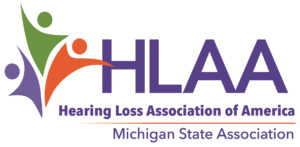Apple Responds to the Concerns of People With Hearing Loss About New iPhone
In the weeks following Apple’s announcement that new iPhones will not have a headset jack, HLAA received more than one call from people outraged by the company’s decision. Apple did not consider the impact removing the jack would have on people with hearing loss who use and depend on a neckloop or other wired solution to hear audio on the phone. When we brought this issue to Apple they responded.
Apparently, the “lightning jack” that has been the iPhone’s connection for recharging the battery will now double as a connector to a headset or, yes, a neckloop. Apple provides an adapter and the people in charge of accessibility at Apple tell us it’s been tested with neckloops and that it works.
While initially skeptical, we have learned from at least one independent source that the lightning connector does work with the adapter and a neckloop. But we know that not all neckloops are the same, so if you have one that doesn’t work with the Apple adapter please let Lise Hamlin know.
While we are on the subject of cell phones, let us know if it is difficult to find information about accessibility and hearing aid compatibility ratings on the websites for cell phone manufacturers such as Apple, Samsung and Motorola and carriers like Verizon, AT&T, Sprint and T-Mobile. We have found that the ratings in particular are sometimes hard to come by.
Remember, if you want to purchase any phone and the accessories that go with them, try the phone – and the accessories – before you purchase them.
If you are frustrated in your attempts to find a hearing aid compatible phone by not being allowed to try it before you buy it, complain first to the provider or manufacturer. If that doesn’t work you can file a complaint directly with the FCC.



